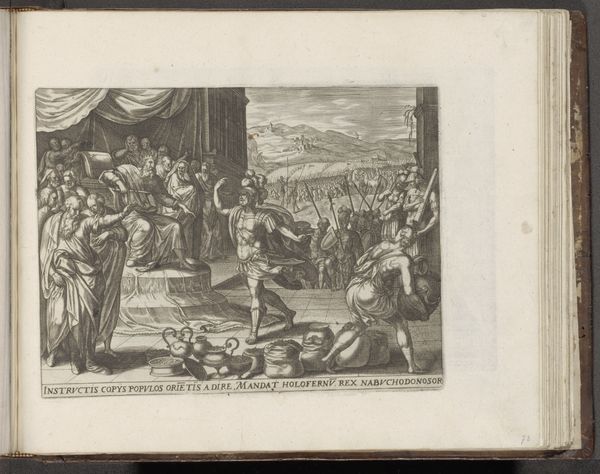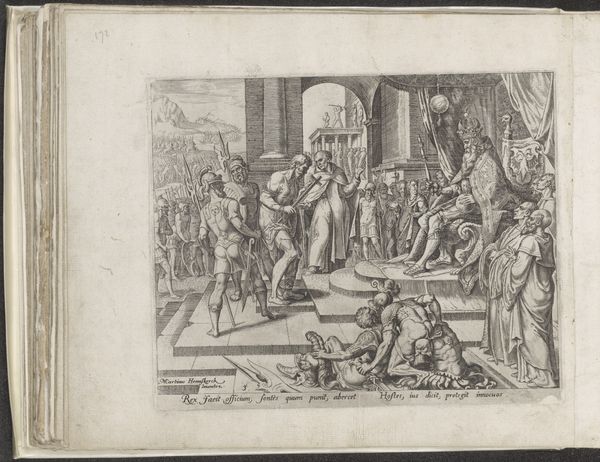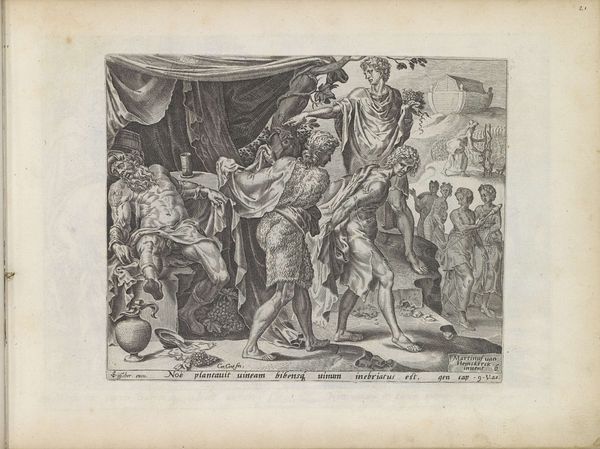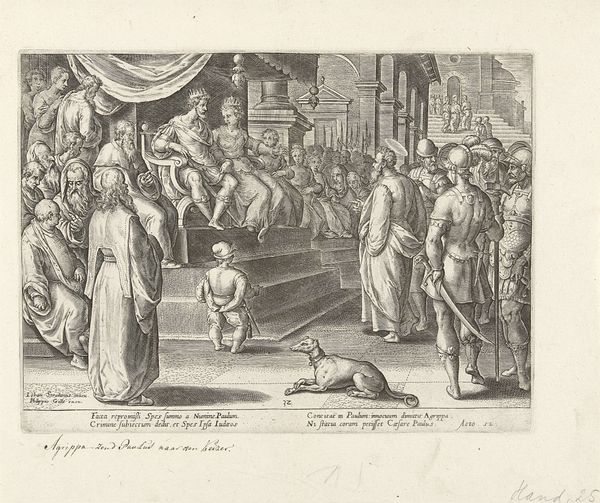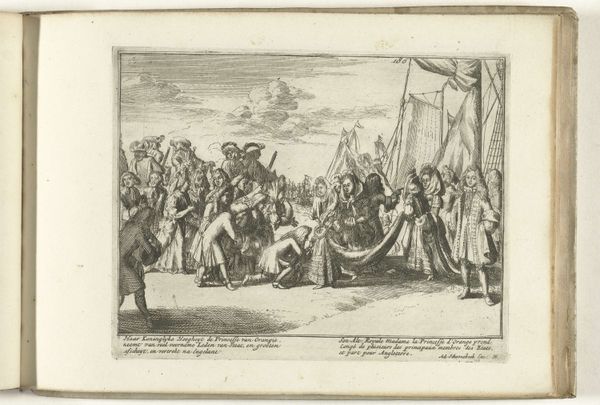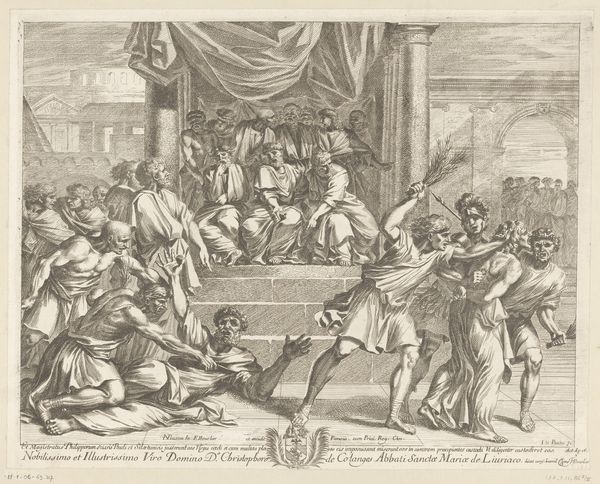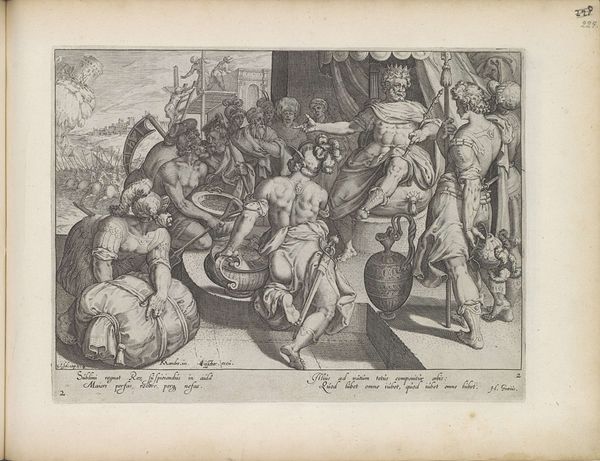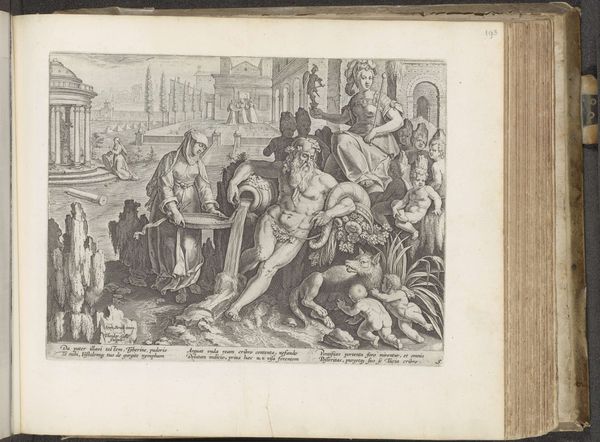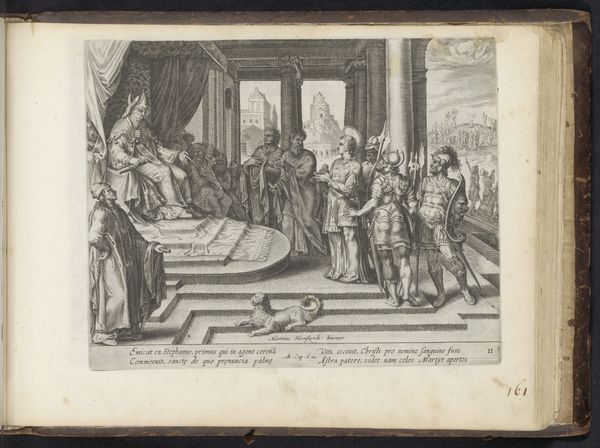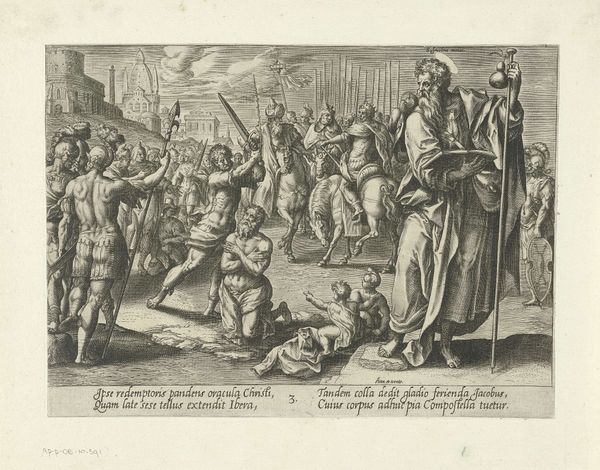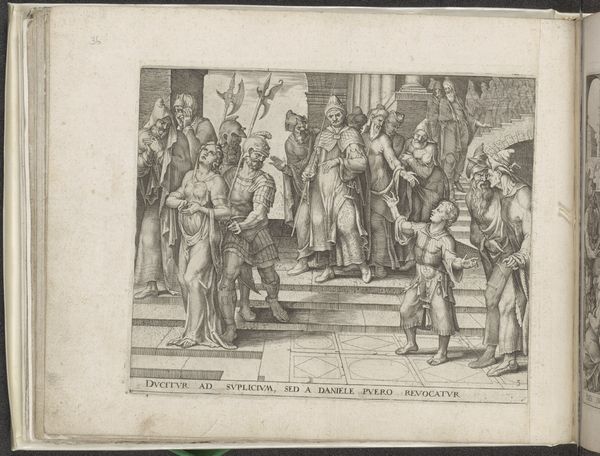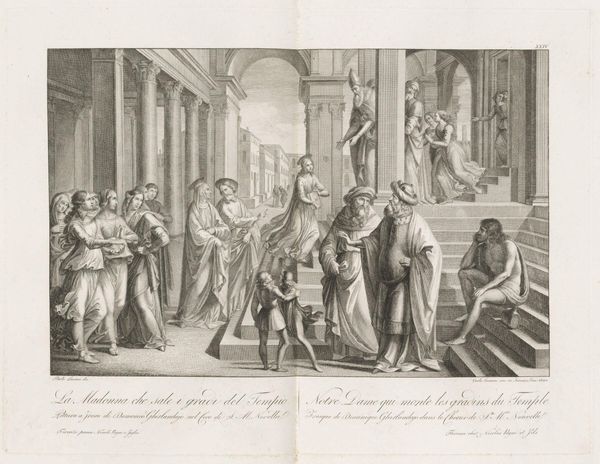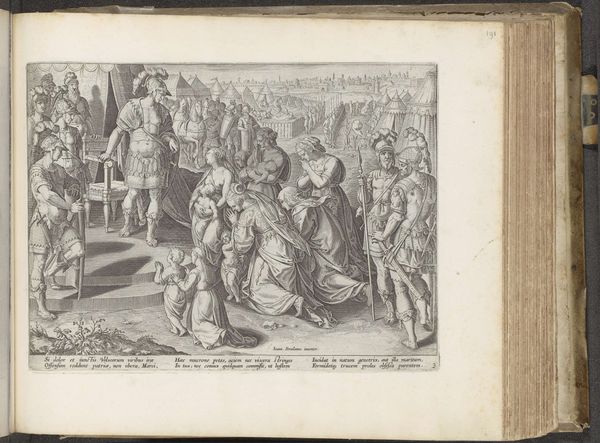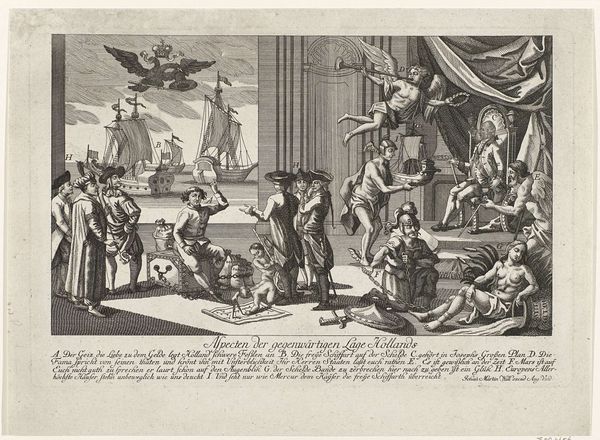
#
aged paper
#
light pencil work
#
pencil sketch
#
old engraving style
#
sketch book
#
personal sketchbook
#
pen-ink sketch
#
sketchbook drawing
#
storyboard and sketchbook work
#
sketchbook art
Dimensions: height 204 mm, width 264 mm
Copyright: Rijks Museum: Open Domain
Curator: This is a pen and ink drawing entitled "Holofernes bij Nebukadnessar," attributed to Gerard de Jode and thought to have been made between 1547 and 1591. It’s currently held at the Rijksmuseum. Editor: It has the feeling of a storyboard, doesn’t it? Stark contrasts, almost theatrical in its presentation of figures, like a scene frozen from a play. There is a king, his messengers, the spoils of war... and soldiers. Curator: De Jode was working during a tumultuous period of religious and political upheaval, and artists often used biblical narratives to comment on contemporary issues. Consider Nebuchadnezzar, a king known for his brutality. Is this a reflection on power and the abuse of authority, resonating with the social anxieties of the time? Editor: Look at the emphasis on the king seated high above his supplicants and army. Note his gesture, and that of the soldier; these recall very old tropes. The crown, the robes, all stand for temporal power, for dominance and the instruments thereof. See how small and vulnerable the masses are that stretch back behind the army into the landscape... Curator: Exactly. And it’s interesting to think about this in relation to De Jode's own position. As an artist, what role did he see himself playing in such a climate? Was he documenting, critiquing, or perhaps even subtly endorsing the existing power structures? This artwork may provide some insight. Who is the protagonist in this image? Editor: Holofernes stands near the material objects gained in the name of that power. Holofernes seems not to have considered that symbols also are claimed and reused—or dismantled—as history unfolds. The spoils of war do not mean victory, after all. They show an exercise of material control that relies on its projection of a powerful illusion. Curator: Indeed. This drawing, like many historical artworks, prompts us to confront the complexities of power, oppression, and resistance throughout history, connecting those struggles to our own present day. What echoes can you recognize from other conflicts of this kind, perhaps even contemporary examples? Editor: Absolutely. This work speaks volumes about the nature of power, its representations, and its ability to impact cultures, even after it passes from view. Thank you for unpacking this rich historical work.
Comments
No comments
Be the first to comment and join the conversation on the ultimate creative platform.
